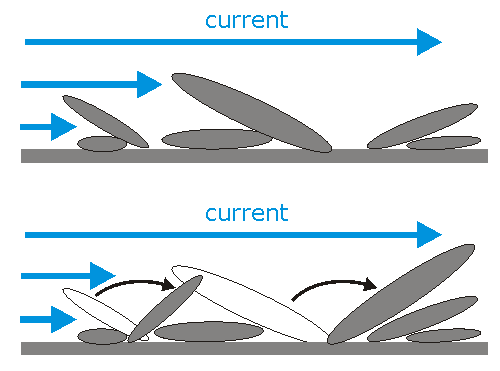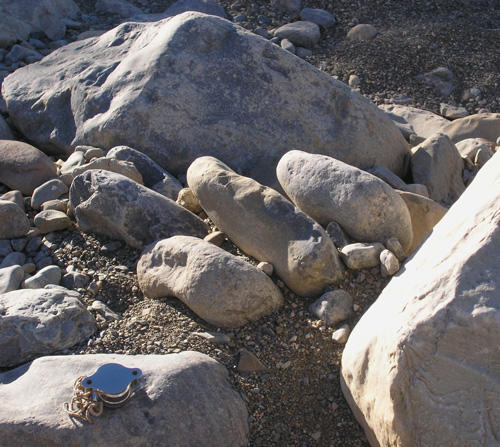I’m not feeling at my best today (I’ve been laid low over the last couple of days with a mild fever), but I thought that that a brief discussion of Friday’s puzzle was in order. As most of you correctly guessed, the photo was taken in a river channel, and many of the boulders in the photo show signs of being imbricated, which is a fabric generated by the effects of strong currents on flattened or disc-shaped clasts, with large flat surfaces. When such clasts are pointing into a current, then the water will strongly push on the flat face and flip them over so that they point downstream. After this, the current just pushes them down into the stream bed; so over time you tend to get all the flattened clasts pointing stacked on top of each other and pointing downstream.

Thus Friday’s picture clearly shows a current flowing from left to right across the image. Chezjake astutely noted that the sand underneath the boulders has also been winnowed away on their left sides, which is another indication of the same current direction.
The photo is from the Zebra River in Western Namibia, which I visited last May. What impressed me was the sheer size of the boulders being stacked up in this way, which pointed to some very strong current flow.

The raging torrent required to achieve all this was a marked contrast with the completely dry riverbed that we were walking down in search of stromatolites. The river is probably seasonal (like many in this part of the world) but I suspect that most of the larger rocks only get moved around in the extremely occasional flash flood. Perhaps we should have taken more note of this geological warning sign, and not camped in the river bed*. Either way, this illustrates one of the really cool things about geology: you might head off to look for one thing, and end up finding lots of other interesting, and yet completely unrelated, things as well.
Here was another cool modern sedimentary feature from the same part of the river, which again indicates strong currents: a pothole.

This is where a small stone gets trapped in an eddy on the river bottom and scours downwards into exposed bedrock.That may or may not be the actual scouring stone in the bottom, although I’d like to think that it might be.
*in our defence, it was the dry season.



Comments (5)